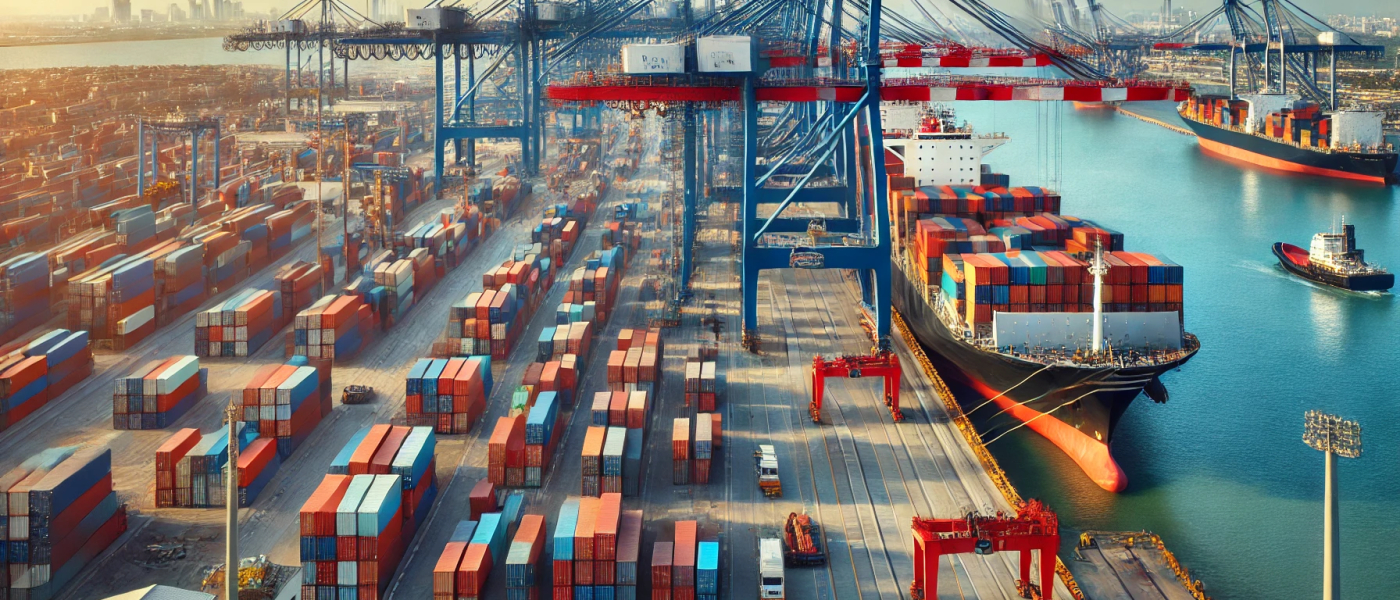China’s Ports on the Rise: 190.9 Million TEU Handled in H1 2024 – A Deep Dive into the Numbers and Trends
- September 9, 2024
- Blog
 China continues to reinforce its position as a global leader in container shipping, with an impressive performance in the first half of 2024. From January to July, Chinese ports handled a staggering 190.9 million TEU (Twenty-foot Equivalent Units), marking an 8.3% increase compared to the same period last year, as reported by London’s Port Technology International. This growth underscores the resilience and dynamism of China’s port infrastructure amid a fluctuating global economy. Let’s explore the key highlights, port performances, and the broader implications for global trade.
China continues to reinforce its position as a global leader in container shipping, with an impressive performance in the first half of 2024. From January to July, Chinese ports handled a staggering 190.9 million TEU (Twenty-foot Equivalent Units), marking an 8.3% increase compared to the same period last year, as reported by London’s Port Technology International. This growth underscores the resilience and dynamism of China’s port infrastructure amid a fluctuating global economy. Let’s explore the key highlights, port performances, and the broader implications for global trade.
Shanghai Port Leads the Charge
Shanghai Port continues to dominate as the world’s busiest container port, moving 4.84 million TEU in July 2024, a remarkable 15.1% increase from the previous year. This brings its total throughput to 30.35 million TEU for the first seven months of 2024, an 8.6% rise compared to 2023. Shanghai’s consistent growth is driven by its strategic location, world-class facilities, and the ongoing demand for Chinese goods across global markets. The port’s ability to handle large volumes efficiently makes it a critical hub in the global supply chain.
Ningbo Zhoushan Port’s Steady Growth
Ningbo Zhoushan Port also reported steady growth, reaching 3.35 million TEU in July, which is a 5.3% increase year-on-year. This port is strategically significant due to its deep-water capabilities, allowing it to handle the world’s largest container ships. The port’s resilience is a testament to its strong operational management and infrastructure investment, which continue to attract major shipping lines.
Mixed Results Across Other Key Ports
While most Chinese ports reported positive growth, performance varied:
- Beibu Gulf Ports achieved the highest percentage growth among the listed ports, despite handling the lowest number of containers. This growth indicates emerging regional trade dynamics and the expanding capacity of smaller ports to contribute to China’s overall throughput.
- Port of Xiamen was the outlier, recording a 3.3% drop in performance with 6.86 million TEU handled in the first seven months of 2024. This decline could be attributed to regional competition or temporary logistical challenges, highlighting the volatile nature of port operations in a competitive landscape.
Container Freight Rates: A Complex Picture
The container freight market also saw notable shifts, with the average value of the Ningbo Containerised Freight Index (NCFI) at 2384.5 points in August 2024. This represents a month-to-month decrease of 12.4%, but a dramatic year-on-year increase of 224.2%. The fluctuation in freight rates reflects broader market dynamics, including changes in supply chain demand, fuel costs, and geopolitical factors. Among the 21 shipping routes tracked, only three saw an increase in freight index, while 18 experienced declines, underscoring the uneven recovery and adjustment within the global shipping industry.
Implications for Global Trade and Supply Chain
China’s robust port performance is a positive signal for global trade, suggesting a steady recovery and growing demand for goods. The increased throughput not only supports China’s export-driven economy but also stabilizes global supply chains that have been disrupted over the past few years. However, the mixed results among ports and fluctuating freight rates indicate that the industry still faces challenges, such as congestion, regulatory changes, and shifts in global trade policies.
Conclusion
China’s ports are a cornerstone of the global supply chain, and their performance in the first half of 2024 highlights the country’s ability to adapt and thrive in a complex economic environment. With continued investment in port infrastructure, technology, and sustainability, China is well-positioned to maintain its leadership in global shipping. As we look ahead, the ongoing development of smaller regional ports and the strategic management of freight rates will be critical in shaping the future landscape of international trade.



